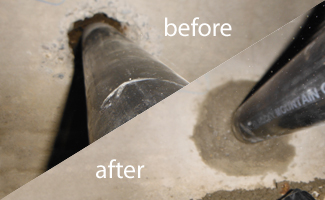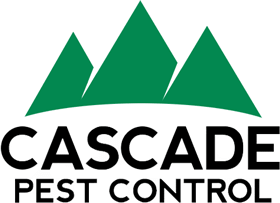Author: Kurt Treftz, Cascade Pest Control

The number of rodents in the area makes it very likely that most local homes and businesses will eventually be forced to deal with an infestation.
While our Cascade Pest technicians can certainly help you eliminate an infestation with environmentally friendly rodent control, we also specialize in a process called rodent exclusion or rodent proofing. Unlike rat control and mouse control methods designed to get rid of rodents that have infested your structure, rodent exclusion / rodent proofing is all about keeping them from entering in the first place.
How to Keep Rodents Out of Your Home
You need to ‘rodent proof’ your home! Rodents are tenacious, agile, and clever, seeking out any entry point into a structure that may lead them to food and shelter. They’re adept climbers, some can jump quite high vertically, and all can squeeze into extremely tight places. The bottom line is that if rodents are making their way into your home, somewhere there is a crack, crevice, or opening that provides an entry point. Our Cascade Pest rodent exclusion services are designed to build them out, block them out, and eliminate the entry points rodents use to reach the inside of your structure.
- It Only Takes the Smallest Opening – Both rats and mice can slip into spaces much smaller than it would appear based on their body size. A rat can squeeze through a hole the size of a quarter, and mice can fit into even smaller openings. So an entry point can be located in nearly any part of the home, which makes rodent exclusion both a complex and necessary process for preventing infestation.
- Thinking Like a Pest – Rodents like rats and mice have habits just like any other creature, and sometimes rodent exclusion is a bit like unraveling a mystery. Where are they entering, and why are they taking a particular route to get inside? Effective rodent exclusion requires both an understanding of pest biology, and knowledge of the construction techniques required to build them out.
- Sealing Common Entry Points – When rodents enter a structure, they will often do so through common structural vulnerabilities which are present in many Seattle area homes and businesses. Some favorite entry points of rodents include: openings where utility lines or plumbing enter the structure, gaps in attic/crawlspace vents, gaps around garage doors, damaged crawlspace access doors, foundation gaps, poorly fitting doors/windows, and many more types of openings. Our team knows where to find openings, and how to seal them effectively.
- Searching Hard-to-Reach Places – Even when the most obvious entry points are sealed, rodents will still seek out hidden entry points. Rodents can climb rough surfaces, climb onto the roof of a structure from tree limbs, and jump much higher than many people realize. Searching for hard-to-find entry points around roofs/attics and eliminating any item that rodents can use as a “ladder” helps keep rodents from entering your structure from unexpected places.
Professional Rodent Exclusion / Rodent Proofing
Every home and business is different. Effective rodent exclusion or rodent proofing requires deep knowledge of how rodents operate, and where they like to enter structures. It also requires an understanding of the most common structural vulnerabilities for area homes/businesses, and a willingness to scour every corner of the structure for entry points. The end result is worth the effort, because rodent exclusion ultimately makes it much, much harder for rodents to infest your home or business.
Whether you’re currently dealing with a rodent control problem or you simply want to head one off in the future, rodent exclusion is a critical step in protecting your Seattle/Puget Sound area home or business. By sealing entry points and “building them out,” our Cascade Pest Control team can help you dramatically reduce the risk of a rodent infestation.
Learn more about our rat exclusion services
